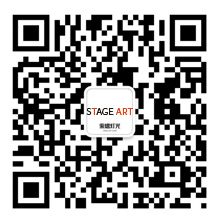Conventional stage lights can be divided into three main categories: floodlights, spotlights and effect lights.
一、Floodlights(Astigmatic light or flat light)
The construction of floodlights does not usually set up lenses (except projection floodlights), but uses direct light from the light source and reflected light from the surface reflector to make it have a directional structure. But there are also floodlights used for long-distance lighting, which focus the direct light of the source from the lens and emit light, that is, the projector and floodlights. In addition, there are a wider range of strip lamps designed for all lighting, and more effective soft light for the local stage, or individual lamps designed to make the curve surface have uniform lighting and adjust its angle. The floodlights have the characteristics of wide illumination range, soft and uniform light, and other colors can be obtained by adding color filters. The floodlights used for stage lighting are generally designed as a row of lights for large area lighting. Lighting for local effects of the stage adopts individual lamps with adjustable angles. The floodlights can't have spot and obvious mark of spot edge in the range of stage lighting.
二、Spotlights
The structure of the spotlight is to focus the light beam from the light source in front of the stage by using a mirror, and to cast light freely in the local area of the stage through the lens. It can adjust the light flux and projection angle of light. There are two ways to adjust: moving light source type and moving lens type. The spotlight is the basic lamp for stage lighting. Its optical system is mainly composed of concave reflector (reflecting bowl) and concentrator. Its characteristics are: its spot is bright in the middle, the edge is clear, its projection range is narrower than floodlight, and the intensity of light can be adjusted in the projection range. Adjustment can be divided into two types: light source movable and lens movable. Local projection effect can be obtained by adjusting the illumination change of the projection surface. Spotlight is generally used for facial lighting, slap, side lighting, pillar lighting, top lighting, tracing and other lighting, which is widely used in stage lighting at present. There are usually two ways to adjust the projection angle and spot size of the spotlight: one is to move the base of the lamp head (usually connected with the reflecting bowl and socket) back and forth to get the best position of the lamp. The second is not to move the bulb, only the lens in front of it. Generally speaking, the former method is used to control the projection angle and range by adjusting the position of the light source. The specific operation method is to adjust the focusing rod at the rear of the lamp housing, or rotate the crank screw shaft, or directly move the lamp head position at the bottom of the lamp housing. At this time, attention should be paid to making the largest side of the filament completely parallel to the lens, and adjusting the central position of the filament to the optical axis of the lens. According to the shape of the edge formed by the projected light, the spotlight can be roughly divided into three kinds: soft spotlight, flat convex lens spotlight and contour spotlight.
(1) Soft spotlight
The spotlight with soft outline of light emitted is an instrument with soft light and relaxed mood in the spotlight. Fresnel lens spotlight is also called Fresnel lens spotlight because Fresnel lens structure is usually used.
(2) Flat-convex lens spotlight
The nature of the light is stronger than that of a soft spotlight, and the outline is clear, but not as focused by a spotlight. Since it is difficult to express it from the quality of light, it is generally called a plano-convex lens spotlight according to its configuration.
(3) Contour spotlight (styling spotlight)
The structure of the floodlights allows the light around the light-emitting surface to be intensely focused, and is an indispensable spotlight for tracking performers. Unlike other spotlights, it has two lenses, and is equipped with a diaphragm that changes the size of the light-emitting area and a light-viewing plate that changes the shape of the light.
三、Effect lights
Effect lighting is a lighting device that expresses the phenomenon of rain, snow, clouds, waves, flames, etc. It can also be called the background of song and dance, drama for effect lighting, and is a very important lighting means for the modern stage. Unlike the general slide projector, the effect illuminator is large in size, strong in brightness, and can be projected. It is a stage-specific projection instrument. The principle is the same as that of a normal projector.
 China
China English
English








